Strength Training for MMA Fighters (Detailed Program)
Author:
Reviewed by:
(21 years of Oly Lifting experience)
Unlock your full potential by engaging with our experts and community! Have questions about your fitness journey or looking for expert advice on weightlifting techniques? Don’t hesitate — leave a comment below and Sergii Putsov will provide a personalized answer and insights to help you reach your goals.
Torokhtiy is reader-supported. Some links are affiliate links, and we may earn a commission at no extra cost to you. See our disclosure page for details.
Weight training for MMA is an essential aspect of any MMA fighter’s training regimen. Whether you’re a beginner or a seasoned pro, incorporating weight training will build strength, power, and endurance, ultimately improving your performance in the octagon. Let’s explore the benefits of including weight training in a mixed martial artist’s fitness routine.
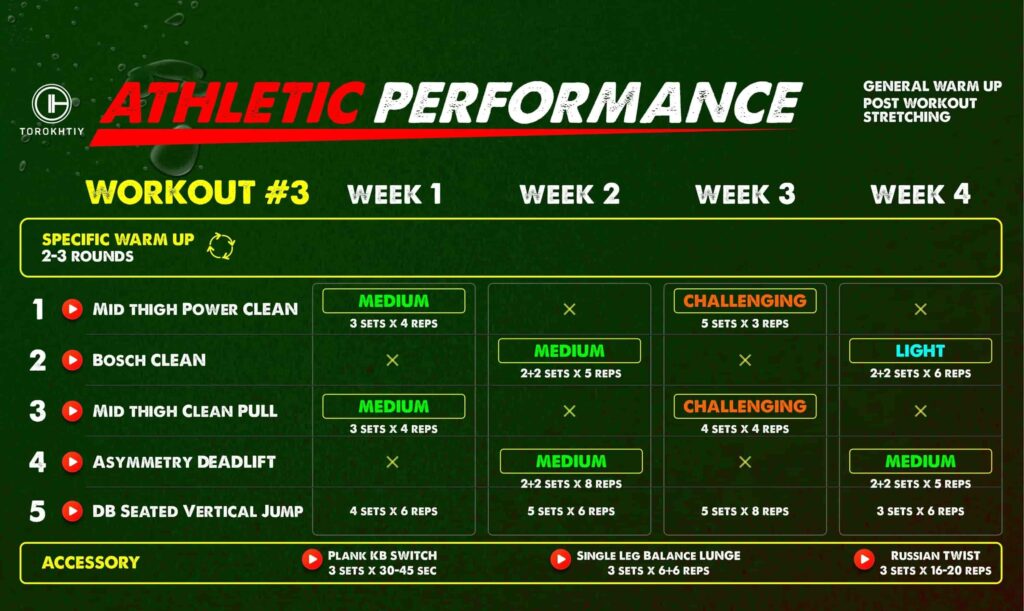
Weight training for MMA for optimal performance in the octagon. By incorporating strength training into your training routine, you can improve your overall athletic ability and develop the physical attributes needed to succeed as a mixed martial artist.

What’s Strength Training for MMA Fighters?
In MMA, fighters need to be able to generate force from their muscles quickly and efficiently, as well as maintain that force over an extended period of time. This is where strength training comes in. By incorporating resistance exercises and weights into their training routines, fighters can develop the strength and power necessary to perform efficiently in the octagon.
Strength training for MMA fighters involves the use of resistance exercises and weights to build muscular strength and power. MMA weightlifting helps fighters substantially improve their physical abilities.
The muscles used in these training programs include the legs, back, chest, shoulders, and arms. Training these muscle groups will help in generating power, speed, and endurance during fights.
The most popular strength training exercises for MMA fighters include squats, deadlifts, bench presses, overhead presses, pull-ups, and rows. In conclusion, strength training for MMA is an important component of any fighter’s training regimen. By incorporating weightlifting into their routines, fighters can improve their overall physical abilities.
Benefits of Strength Training for MMA Fighters
A well-designed MMA weight training program that includes strength training exercises can provide a multitude of benefits for fighters. Strength training not only helps improve muscular strength and power but it also enhances overall athletic performance.
Let’s take a look at the various benefits of strength training for MMA fighters and how it can help improve their performance in the ring. Some of the key benefits include:
- Increased power and explosiveness
- Improved muscular endurance
- Reduced risk of injury
- Enhanced overall physical fitness
Increased Power and Explosiveness
Strength training for fighters can help increase power and explosiveness by improving the rate at which muscles generate force. The use of heavy weights in an MMA strength training program can help develop fast-twitch muscle fibers, which are responsible for generating explosive movements.
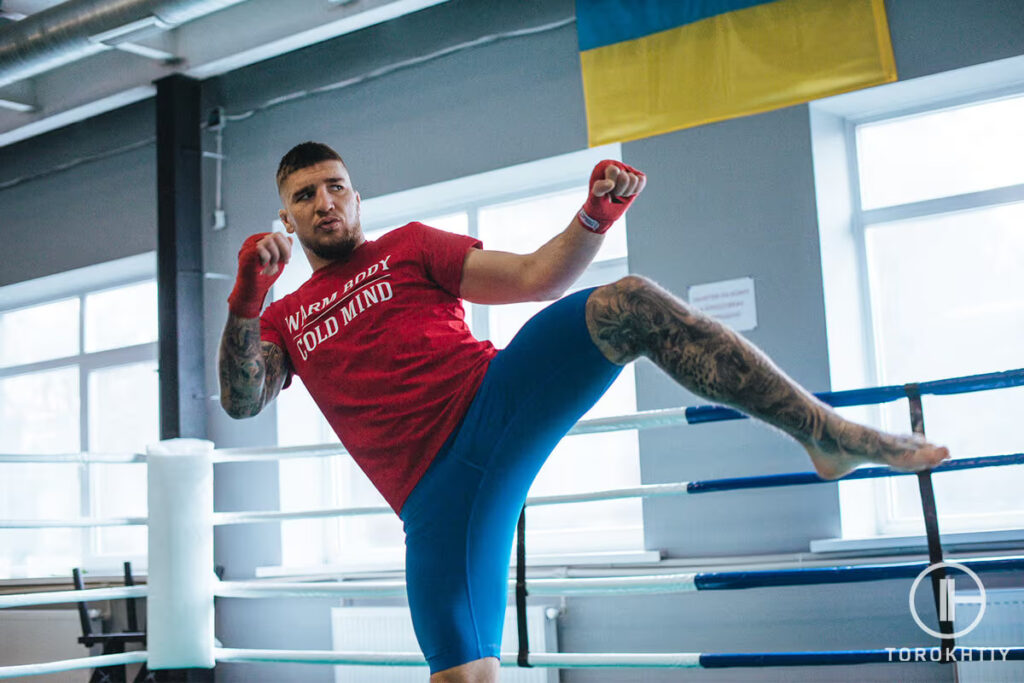
Fighters can develop the power and explosiveness needed to perform takedowns, strikes, and other techniques with greater force and speed.
Improved Muscular Endurance
Weightlifting can also help improve muscular endurance by increasing the amount of time that muscles can contract without fatigue. This is achieved through exercises that include high-rep sets, circuit training, and plyometrics.
By improving muscular endurance, fighters can maintain their performance levels throughout longer rounds or matches, giving them an edge over their opponents.
Reduced Risk of Injury
Strength training can help reduce the risk of injury by strengthening muscles, ligaments, and tendons. It can help prevent strains, sprains, and tears, which are common in combat sports.
By incorporating exercises that target the muscles that are put to work in MMA, fighters can build the resilience needed to withstand the physical demands of the sport.
Enhanced Overall Physical Fitness
Weightlifting can also help enhance overall physical fitness by improving cardiovascular health, body composition, and overall strength. This can help fighters perform better and also improve their quality of life outside of training. By following a well-designed MMA strength training program, fighters can achieve their fitness goals and excel in their sport.
Strength Training Exercises for MMA Fighters
If there’s one thing to be taken out from whatever we learned till now, it is that lifting weights is an essential component of an MMA fighter’s training program. Strength training exercises help improve a fighter’s overall physical abilities and basically give them an edge.
By incorporating lifting weights for MMA into their training routine, fighters can develop the much-needed muscular strength and other abilities required to perform in the octagon.
With that being said, let’s take a look at some of the best strength training exercises for MMA fighters.
Deadlifts
Deadlifts are one of the most effective compound exercises for building overall strength and power in the legs and hips, which is essential for explosive movements in MMA. Deadlifts work the entire posterior chain, including the glutes, hamstrings, and lower back.
To perform the exercise, stand with your feet hip-width apart and grip the bar with both hands. Keep your back straight and lift the bar up until you are standing straight, then slowly lower it back down.
Squats
Squats are one of the best compound exercises that target the lower body, specifically the quadriceps, hamstrings, and glutes. Squats help build lower body strength and power, which is essential for takedowns and other grappling techniques.
To perform the exercise, stand with your feet shoulder-width apart and lower your hips down as if you were sitting on a chair. Keep your back straight and your knees over your toes.
Pull-Ups
Pull-ups are a bodyweight exercise that targets the upper body, specifically the lats, shoulders, and arms. This exercise helps build upper body strength, which is essential for clinching, grappling, and striking techniques.
To perform the exercise, grip the bar with both hands and pull your body up until your chin is above the bar. Lower yourself back down slowly.
Bench Press
The bench press is a compound exercise that primarily targets the chest, shoulders, and triceps. This exercise helps build upper body strength and power, which is essential for punching and striking techniques.
To perform the exercise, lie on a bench with your feet flat on the ground and grip the bar with both hands. Lower the bar down to your chest and then press it back up.
Power Cleans
Power cleans are an explosive full-body exercise that increases power and explosiveness, particularly in the hips, legs, and core of a mixed martial artist. This can improve the strikes, takedowns, agility, and basically enhance overall athletic performance.
To perform a power clean, stand with the barbell on the ground and explosively lift it to your shoulders while dropping into a quarter squat. Then, stand up fully while maintaining control of the barbell.
Landmine Jerks
Landmine jerks are a unilateral explosive exercise that can help fighters improve their power, coordination, and balance while generating force through the entire body.
To perform a landmine jerk, start with one end of the barbell in a landmine station, explosively drive the barbell up with one arm while dropping into a lunge position, and then stand up fully while controlling the barbell. Repeat the same on the other side.
Landmine Rotations
Landmine rotations are a functional rotational exercise that helps mixed martial artists develop their core stability and rotational power. To perform a landmine rotation, attach one end of the barbell to a landmine station, hold the other end of the barbell with both hands, and rotate your torso while keeping your hips stable. Repeat on the other side.
Kettlebell Swings
Kettlebell swings are a dynamic exercise that greatly helps MMA fighters increase hip power, explosive strength, and cardiovascular endurance. They can also enhance grip strength and improve overall conditioning.
To perform a kettlebell swing, stand with feet shoulder-width apart, hinge at the hips, and swing the kettlebell between your legs, then explosively drive your hips forward and swing the kettlebell to shoulder level.
Turkish Get-Ups
Turkish get-ups are a full-body exercise that helps build overall strength and coordination. This exercise involves lying on the ground and then standing up while holding a kettlebell or dumbbell.
The Turkish get-up helps improve core strength and stability, which is essential for overall athletic performance in MMA. To perform the exercise, lie on your back with one hand holding the kettlebell or dumbbell straight up. Stand up while keeping the weight overhead, then return to the starting position. Repeat on the other side.
Key Factors in MMA Fighters’ Strength Training Routine
Strength training is an essential component of any MMA fighter’s training routine. A well-designed strength training program can help improve strength, power, speed, endurance, and overall performance inside the octagon.
However, not all strength training programs are created equal. To get the most out of your program, there are several key factors that you need to consider. Let’s take a look at some of the key factors in an MMA fighter’s strength training routine.
Specificity
Specificity refers to tailoring the training program to the specific demands of the sport. This includes identifying the primary muscle groups used in MMA, such as the legs, hips, back, and shoulders, and designing exercises that mimic the movements used in the sport.
For example, focusing on explosive movements like power cleans, or box jumps can improve the fighter’s ability to deliver strong strikes and takedowns.
Similarly, exercises that target the core can improve the fighter’s balance and stability, while grip strength exercises can enhance their ability to grapple and clinch. By incorporating exercises that simulate the demands of the sport, the fighter can improve their performance in the sport and reduce the risk of injury.
Progressive Overload
The principle of progressive overload involves gradually increasing the stress placed on the muscles over time. This is typically done by increasing the weight lifted, the number of sets or reps performed, or the intensity of the exercise.
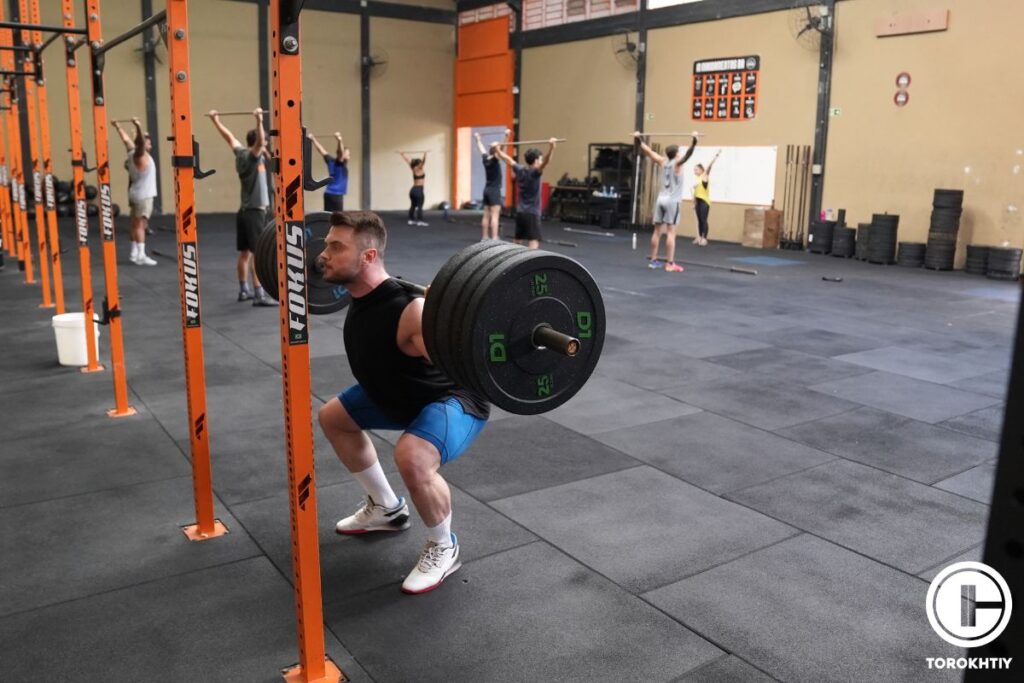
By continually challenging the muscles, the fighter can promote muscle growth and strength gains. However, it’s important to progress gradually to avoid injury and overtraining. For example, a fighter may increase their weight by 5% each week, or add an additional set or do more reps.
By gradually increasing the stress on the muscles, the fighter can continue to make progress and avoid hitting a plateau in their training.
Compound Exercises
Compound exercises, in a way, are the foundation of strength training. These are multi-joint movements that engage multiple muscle groups simultaneously. These exercises are highly effective in building functional strength and improving overall athleticism.
Examples of compound exercises include squats, deadlifts, bench presses, pull-ups, and lunges. These exercises can be modified to target specific muscle groups or areas of weakness.
By incorporating compound exercises into an MMA strength training program, the fighter can improve their overall strength and power, increase their muscle mass, and improve their performance in the sport. Additionally, these exercises can help prevent injury by improving the athlete’s stability, balance, and coordination.
Follow us!

Free!
Get a 2-week Weightlifting Program as a bonus for the subscription to kickstart your training plan!

Free!
Recovery
Recovery is a critical component of MMA strength training, as it allows the muscles to repair and rebuild after a workout. Adequate recovery time is essential to avoid overtraining and reduce the risk of injury.
This involves incorporating rest days into the training schedule, as well as ensuring that the fighter gets enough sleep and proper nutrition to support their recovery process. Recovery can also involve incorporating strategies such as foam rolling, stretching, or massage therapy to help alleviate muscle soreness and promote flexibility.
By prioritizing recovery, the fighter can maximize the benefits of their MMA strength training program, improve their overall performance in the sport, and reduce the risk of injury.
Consistency
Consistency is one of the most important factors, not only for MMA strength training but for any sport in general. You have to be able to maintain a regular and disciplined training schedule over time. This involves committing to an MMA strength workout routine and sticking to it, even when faced with obstacles or distractions.
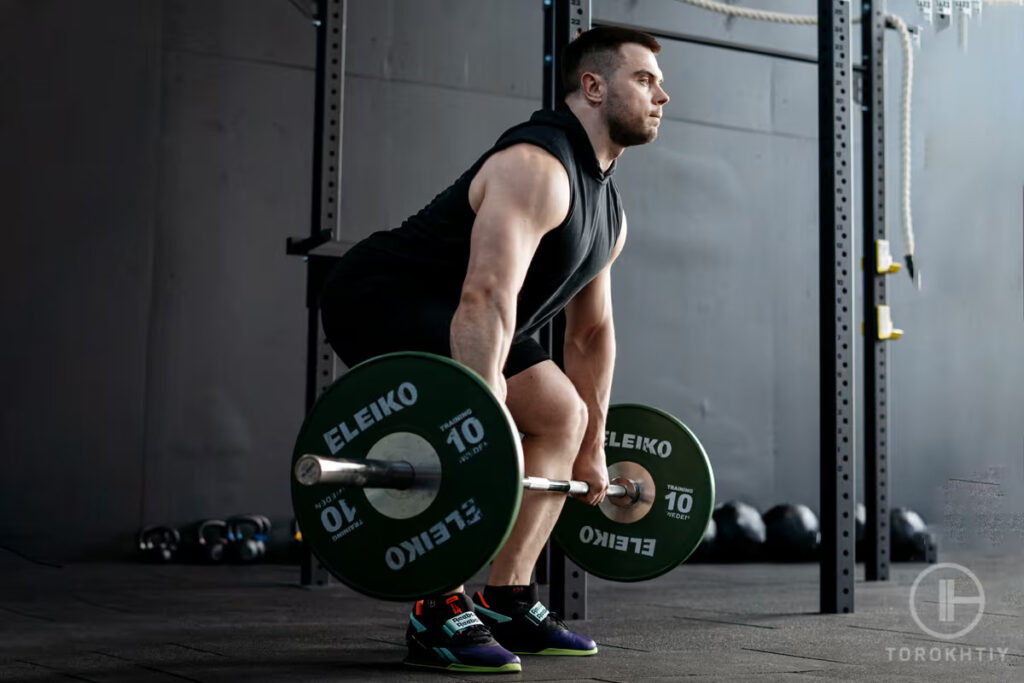
As a fighter, it will help you build momentum and make steady progress toward your goals. By consistently showing up to training sessions and pushing themselves to improve, the fighter can develop the mental toughness and discipline needed to succeed in the sport.
Additionally, consistency helps prevent setbacks and injury by allowing the fighter to gradually build their strength and endurance without pushing themselves too hard too soon.
MMA Fighters Strength Training Programming
An effective MMA strength training program should incorporate a variety of exercises to improve muscular endurance, strength, and power. Here’s an example of a strength training program that focuses on developing full-body strength:
Day 1: Lower Body Focus
1. Deadlift: 4 sets x 5 reps
Focus on explosive movement in concentric phase
2. Bulgarian Split Squat: 3 sets x 8 reps per leg
Keep the movement slow and controlled for balance and stability
3. Kettlebell Swings: 3 sets x 15 reps
Ensure explosive hip drive
4. Single-Leg Box Jump: 3 sets x 5 reps per leg
Land softly and stabilize on one leg
Day 2: Upper Body Focus
1. Bench Press: 4 sets x 5 reps
Focus on speed and power
2. Pull-Ups: 3 sets x max reps
Add weight for progressive overload if able
3. Landmine Press: 3 sets x 10 reps per side
Adjust grip width for varied angles of activation
4. T-Plank: 3 sets x 10 seconds per side
Emphasize stability and core engagement
Save it for easy access!
Bookmark this page now to access the program and instructional videos anytime, anywhere.
Stop wasting time searching during your gym sessions.
Day 3: Full Body Focus
1. Back Squats: 4 sets x 6 reps
Aim for full depth and explosive upward movement
2. Power Clean: 4 sets x 4 reps
Focus on explosive pull and clean technique
3. Landmine Rotations: 3 sets x 8 reps per side
Control the descent to work anti-rotation
4. Turkish Get-Ups: 3 sets x 2 reps per side
Focus on control and stability throughout the movement
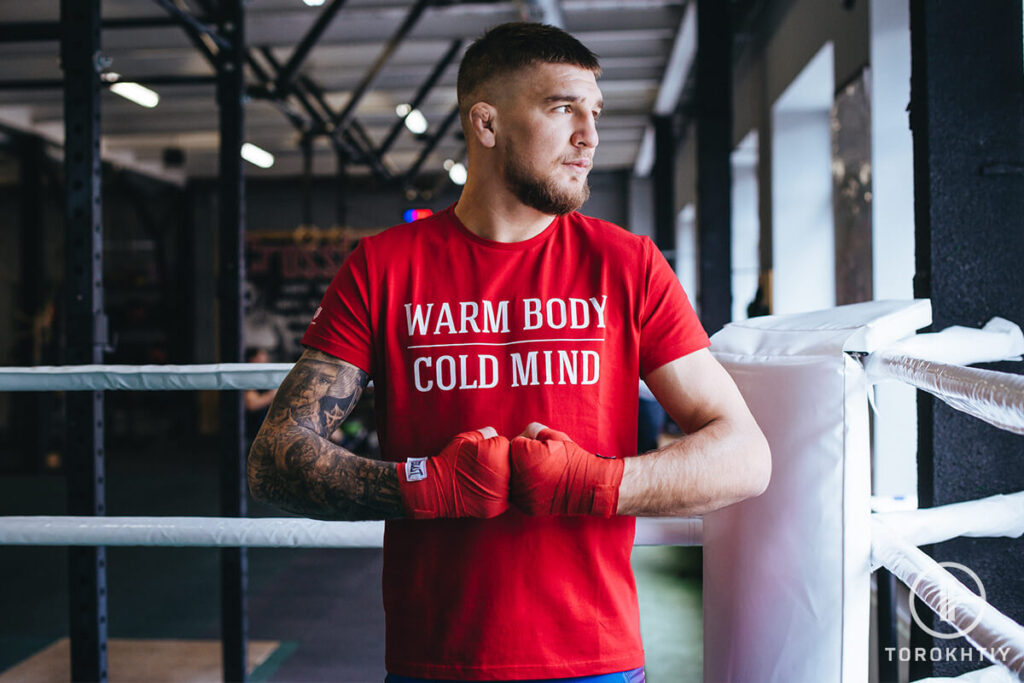
Volume and Intensity Guidelines:
Warm-up: Always include a dynamic warm-up before each session, focusing on mobility and activation.
Rest Intervals: 2-3 minutes between sets for compound lifts, and 1-2 minutes for accessory exercises.
Load: Start at 50-60% of your 1RM for the main lifts and progressively increase the weight each week by 5-10 lbs, based on performance.
Accessory Exercises: Keep these at a moderate load to focus on stability and injury prevention.
How to read Olympic weightlifting training plan load
This is just one example of an MMA weightlifting program, and it’s important to tailor the program to fit the individual fighter’s needs and goals. Additionally, it’s important to gradually increase the weight and intensity of each exercise over time to ensure that the fighter is making progress and avoiding injury.
With a well-designed strength training program that emphasizes consistency and progressive overload, MMA fighters can improve their overall performance in the sport and reduce the risk of injury.
Adequate amount of rest and proper nutrition is also equally important for performing well during workouts and improving your performance as a fighter.
Basic Equipment You Need
The basic equipment needed for most of the exercises mentioned above includes a barbell, weight plates, dumbbells, a squat rack, a bench, and a pull-up bar. Other equipment like resistance bands, medicine balls, and kettlebells can also be incorporated for additional variety and challenge. It’s important to ensure that the equipment used is of good quality and appropriate for the exercise being performed.
In addition, safety equipment like lifting belts and wrist wraps can be used to provide extra support and protection during heavy lifts. A solid gym or home gym setup that includes these basic pieces of equipment is essential for a successful MMA weightlifting program.
FAQ
What Lifts Are Best for MMA Fighters?
The best lifts are compound exercises that work multiple muscle groups and mimic the movements used in the sport. These include squats, deadlifts, bench presses, overhead presses, pull-ups, and rows.
Exercises like power cleans, and snatches are also beneficial for improving explosiveness, overall strength, and conditioning. Incorporating these lifts into a well-rounded MMA weightlifting program can help fighters improve their power, endurance, and overall athletic performance in the octagon.
Does Weightlifting Help MMA Fighters?
Yes, weightlifting can be incredibly beneficial for MMA fighters. Strength training can help improve power, endurance, speed, and overall athleticism, all of which are crucial in the sport of MMA. Lifting weights can also help prevent injury and improve recovery time, allowing fighters to train harder and longer. Incorporating a well-designed MMA weightlifting program into an overall training regimen can help fighters reach their full potential in the octagon.
How Often Should an MMA Fighter Lift Weights?
The frequency of weightlifting for MMA fighters will depend on the individual’s training schedule and goals. Generally, it’s recommended that fighters lift weights at least two to three times per week, focusing on compound exercises and incorporating progressive overload. However, it’s important to balance weightlifting with other forms of training, like cardiovascular exercise, to avoid overtraining and injury.
Conclusion
In conclusion, strength training for volleyball players can benefit their overall performance. Developing upper and lower body strength and cardio endurance can help players become faster, more powerful, and more agile on the court.
Are you a volleyball player who’s started a weight-lifting program? Let us know what exercises work best for you in the comments below!
Also read:
- Strength Training for Baseball
- Strength Training for Volleyball
- Military Workouts for Weight Loss
- Strength Training for Runners
- Strength Training for Cyclists
- Strength Training for Soccer Players
- Kettlebell Buying Guide
- Weight Bench Guide
References:
- Best Strength Exercises for MMA Fighters // Elite Sports: https://www.elitesports.com/blogs/news/best-strength-exercises-for-mma-fighters
- Strength Training For MMA: Are You UFC Ready? // Sweet Science of Fighting: https://sweetscienceoffighting.com/strength-training-for-mma/
- THE ULTIMATE STRENGTH-BUILDING MMA WORKOUT // Muscle and Fitness: https://www.muscleandfitness.com/routine/workouts/workout-routines/workout-build-explosive-strength/
Why Trust Us?
With over 20 years in Olympic weightlifting, strength training, nutrition coaching, and general fitness our team does its best to provide the audience with ultimate support and meet the needs and requirements of advanced athletes and professional lifters, as well as people who strive to open new opportunities and develop their physical capabilities with us.
By trusting the recommendations of our certified experts in coaching, nutrition, and sports training programming, as well as scientific consultants, and physiotherapists, we provide you with thorough, well-considered, and scientifically proven content. All the information given in the articles concerning workout programming, separate exercises, and athletic performance, in general, is based on verified data.
The product testing process is described in more detail here.
Author: Sergii Putsov
Head of Sport Science, PhD
Best Results: Snatch – 165 kg,
C&J – 200 kg
Sergii Putsov, Ph.D., is a former professional weightlifter and National team member, achieving multiple medals in the 94 kg weight category at national competitions. With a Master’s degree in “Olympic & Professional Sport Training” and a Sport Science Ph.D. from the International Olympic Academy, Greece, Sergii now leads as the Head of Sport Science. He specializes in designing training programs, writing insightful blog articles, providing live commentary at international weightlifting events, and conducting educational seminars worldwide alongside Olympic weightlifting expert Oleksiy Torokhtiy.
Reviewed by: Oleksiy Torokhtiy
Olympic Weightlifting Champion, PhD in Sport Science
Best Results: Snatch – 200 kg,
C&J – 240 kg
Oleksiy Torokhtiy is a professional athlete boasting 20 years of experience in Olympic weightlifting. With multiple European and World titles under his belt, he has showcased his prowess in two Olympic Games (Beijing 2008 and London 2012). Upon concluding his illustrious career, Oleksiy dedicated himself to coaching. By 2022, he had conducted over 200 weightlifting seminars worldwide. He is the visionary behind an international sportswear and accessories brand known for its motto, “Warm Body Cold Mind.” Additionally, he is an esteemed author and the creator of a series of training programs and eBooks.







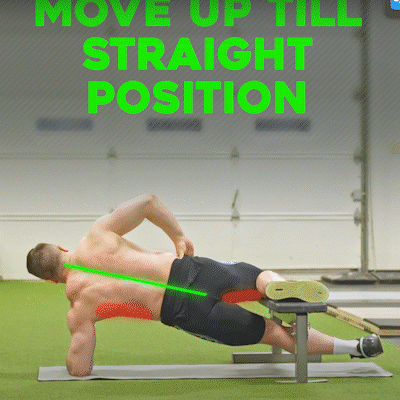
Still have questions after reading our article? Unlock your full potential by engaging with our experts and community! Don’t hesitate — leave a comment below and Sergii Putsov will provide a personalized answer and insights to help you reach your goals.